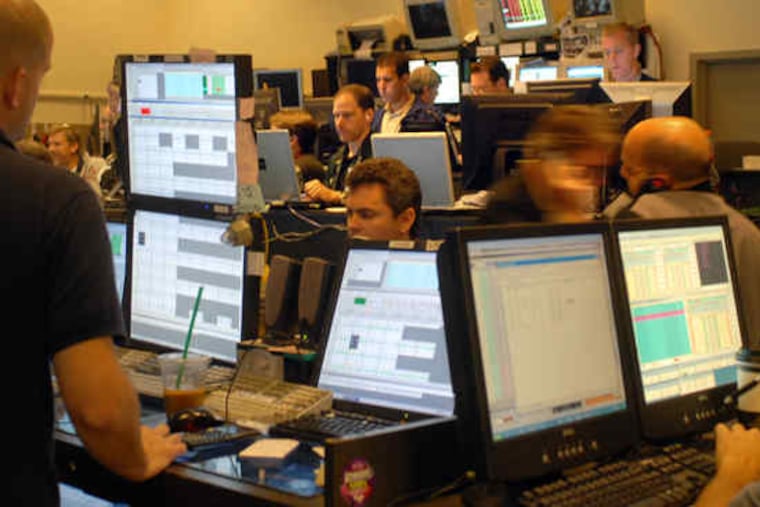Wall Street came to Philly’s Market Street after Sept. 11 attacks
“It was the last time I remember everyone in America feeling really united, like we were all one people,” said one broker, recalling the time after the attacks.

Warren West always worked for himself as a stock and options trader, at his Philadelphia firm of Greentree Brokerage. On Sept. 11, 2001, he entered his offices at 17th and Market as usual, before the market opening at 9:30 a.m.
Instead of his employees sipping coffee and preparing for trading, “no one was at their desks, but around the TV. They were all looking at the first tower [of the World Trade Center] burning,” he recalled. Then a second plane hit the South Tower, and “everyone picked up their stuff and just walked out. The streets here [in Philly] were full of people panicking.”
West himself had worked in the World Trade Center in the 1990s, on the fourth floor. “I was there in 1993 during that first terrorist attack, and then moved to Philadelphia, so I still had a lot of friends in New York,” he said.
Immediately after the Sept. 11 attack, he phoned a friend at the AMEX, the American Stock Exchange, in lower Manhattan, blocks from the wreckage. “She couldn’t speak. She had just seen a human head rolling down the street and was in shock.”
Within a few days, AMEX traders began traveling down to Philadelphia Stock Exchange, to work shoulder to shoulder on the same trading floor with one-time competitors, and West was there.
“It was the last time I remember everyone in America feeling really united, like we were all one people,” said West, who is now retired and living in Voorhees.
Mike Bickford, then an AMEX executive and also retired, had just left his lower Manhattan office to visit the trading floor downstairs when the first tower was hit two blocks away.
“We felt a power surge, but didn’t think much of it,” he recalled. “Then we all started seeing the images on television, even though this was just down the street. I watched the second plane hit the South Tower, but at that point there was still discussion about opening trading.”
Within minutes, a thunderous explosion sent the AMEX into turmoil.
“We lost all communications. The first floor filled up with smoke and ash, so most everyone evacuated,” said Bickford, who now lives in Center City Philadelphia.
By Sept. 17, the following Monday, markets reopened, and a hundred or so AMEX traders set up shop in Philadelphia. Together, the New York and Philly rivals began trading together on the crowded floor of the PHLX. It lasted about a month.
The PHLX “was proud of having helped, and we were so grateful. Everybody was pulling together,” Bickford said. “We, as a country, were at war, there was no red or blue.”
Twenty years later, what’s the difference?
“Everyone felt a sense of community. There was no hyphenated America,” West said. “Today that hyphen extends along ethnicities, racial origins, ideologies. We separate ourselves along religion, sexual orientation. You name it. How many times can we divide or splinter? That’s the difference now.”
Herb Blank, an expert in exchange traded funds, agreed: “It was a time of unprecedented cooperation. The plan to move the options trading to the PHLX and the ETFs and stock trading to the NYSE had to be carried out over the weekend when windows were busted and the elevators had to be operated manually. When the chips were down, the PHLX guys came through like champs,” said Blank, a senior quantitative analyst at Value Engine Inc. and senior consultant at Global Finesse LLC.
The Philadelphia Stock Exchange ultimately merged with Nasdaq, but still exists today.
Nasdaq’s futures and options trading market and information technology unit was based in the Philadelphia Stock Exchange building at 1900 Market St., but it relocated in 2016 to the 49-story FMC headquarters tower at 2900 Walnut St.
“The commonwealth of Pennsylvania and city of Philadelphia have provided a tremendous opportunity for Nasdaq to create state-of-the-art options trading technology, as well as a new vibrant office environment in the new FMC Tower,” said Tom Wittman, executive vice president and global head of equities, Nasdaq, at the time.